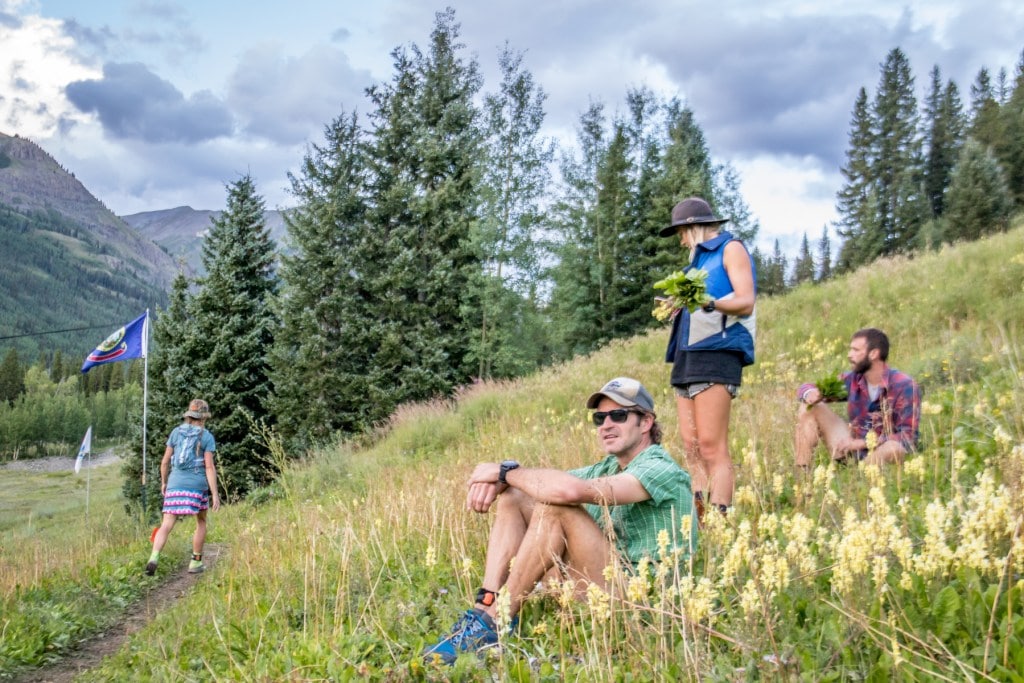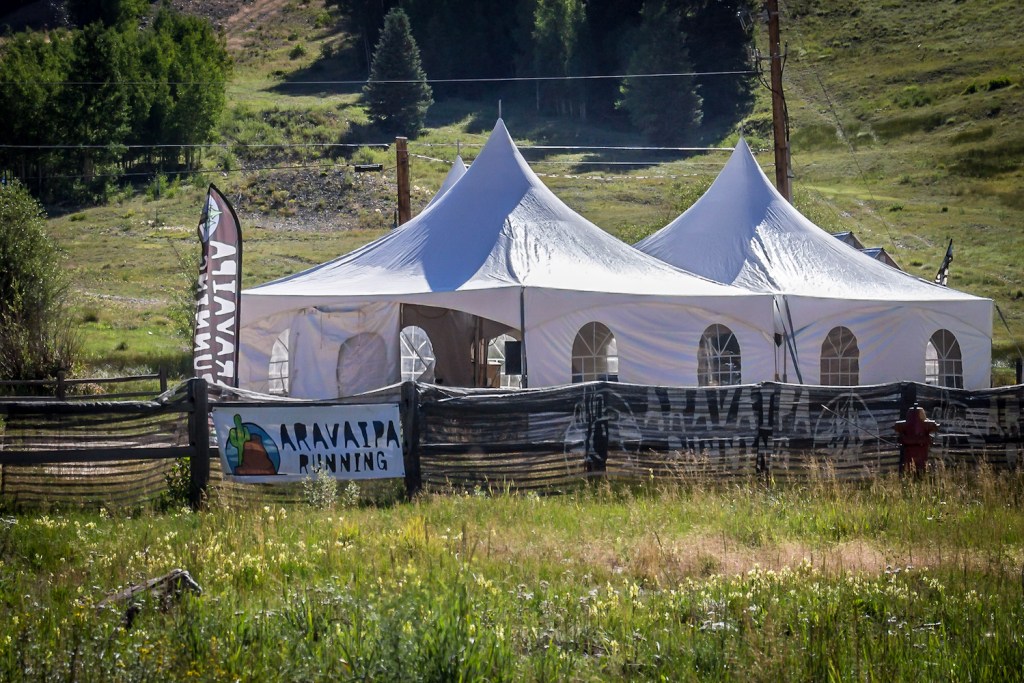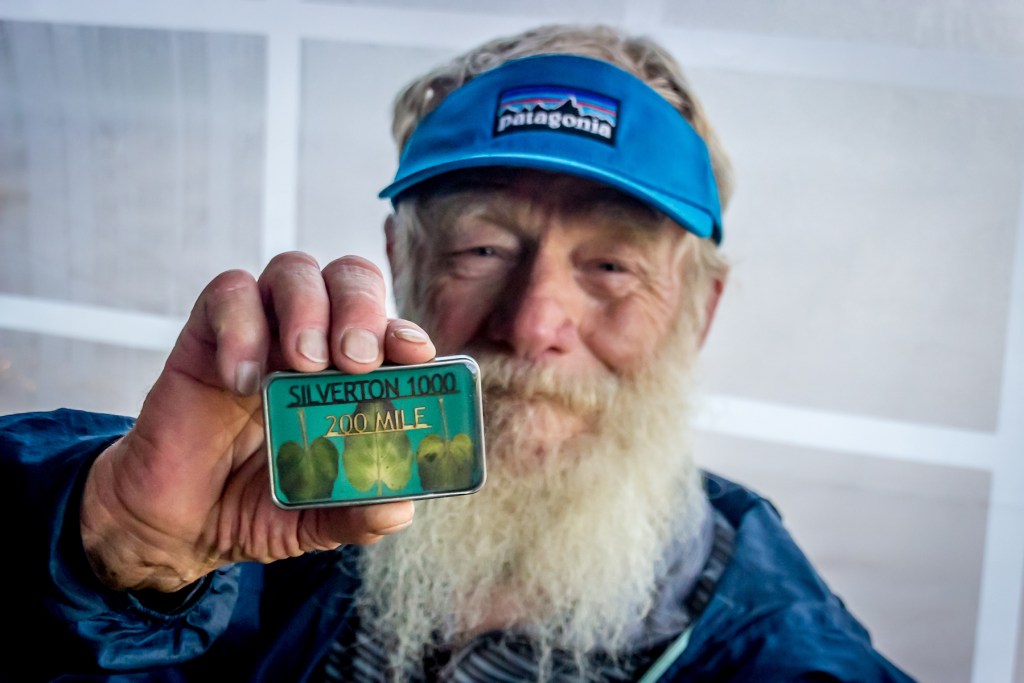The Silverton 1000 is a 6-day mountain running event in which participants start and stop as they please, runners choose their own distances—and it’s impossible to DNF.
Welcome to the circus that is the Silverton 1000 trail race. For six days, dozens of runners circumnavigate a one-mile singletrack loop in and out of the pines at the base of Kendall Mountain in Silverton, Colorado. If you think logging a gazillion laps around one-mile loop sounds boring, think again.

View from the course | Photo: Jubilee Paige
Unlike nearly every other race out there, race director and founder Jamil Coury and race co-founder Rodger Wrublik shaped the Silverton 1000 with very few rules: Runners must switch directions on the loop every six hours. All participants must officially start, permitted on any day as long as they hit the course at 9 a.m. on the runner’s first day. The rest of the time, runners may start and stop, come and go, run and walk as they please. Participants can leave the course at any point as long as they return to the exact same spot when they start again, and continue in the same direction, regardless of the current route orientation.
There is no such thing as a Did Not Finish (DNF), as the amount of actual running and how it is accomplished is left completely up to the individual. This August, 14 competed in the 6-day race, 6 in the 72-hour, 5 ran for 48 hours, 3 for 24, 1 went for 12 hours and 4 raced for 6 hours. Some runners also go for mileage goals, which they must hit within their declared time period of choice, ranging from 100 to 500 miles and earning them a custom handmade belt buckle embedded with the local wildflowers of the San Juan Mountains.
“This race is a religious experience.”
The Silverton 1000’s cult following is filled with runners from many walks of life chasing a variety of goals. This year, 70-year-old Criss Furman is on a quest to reach 100 miles after a full foot reconstructive surgery in March. A 16-year-old runs laps all day, everyday—but stops each night for a few hours of sleep. A mom from Phoenix presses onward despite a knee injury. And Scott Thompson, an ultrarunner with races like the Zion 100 and the Grand Canyon Ultra under his belt, keeps his head down in focus, determined to reach 300 miles by the end of the 6 days.
There is also the elusive 1,000 Lifetime Miles Club. Currently, the club has two members: Patricia Carroll and Mike Garcia, who journey to this event annually from Hawaii. Dressed in his 1,000-mile jacket, earned in the middle of this year’s event, Mike says, “This race is a religious experience.”

Race spectators | Photo: Jubilee Paige
The Silverton 1000 was inspired by a 19th-century legend. In 1809, a British man named Captain Barclay walked 1,000 miles in 1,000 successive hours—amassing the equivalent of 8 million U.S. dollars and significant press. “Rodger dreamed of creating a similar style event, but on a true mountain course,” Jamil explains. “But most people don’t have 42 days to just run like Captain Barclay so we use this 6-day format in the same spirit of that bet.”
The race course gains 250 feet of vert over the mile, which doesn’t sound like a lot, but adds up to over 20,000 feet over the course of 100 miles. Nestled at 9,300 feet, the highest point along the course, is Steep Camp, a tent city that runners pass through on every lap. It’s a makeshift oasis offering a respite from the cold mountain nights (known to drop as low as 33 degrees) and to rest weary bodies. The setup is complete with a 24-7 aid station and a snack game that’s tough to beat: 15 dozen eggs, 7 pounds of bacon, 14 cans of Pringles, 20 gallons of Gatorade and a buffet of Swedish Fish, M&Ms, pretzels and peanut butter.

Steep Camp Photo: Jubilee Paige
Participants click on their headlamps as the last glimmers of sunlight dip behind the surrounding peaks. Some stop for beer breaks. Others keep racking up the laps.
“This race is a driving force in the year for a guy like me.”
On the final day, cheers ring from the white Steep Camp tent as runners complete their races and walk away with pride and belt buckle in hand. For six-day runners on the cusp of a goal, breaks become shorter and determination grows.

Criss Furman | Photo: Jubilee Paige
Criss completes his 100-mile objective, a tremendous accomplishment for any human, but he is adamant that this is a small step toward his comeback. After all, he did log 200 miles just two years earlier. If anything, Criss has determination on his side. He picked up BMX racing at age 55 after a lifetime of mountaineering in Colorado—and began running ultramarathons just 5 years ago. “You know, this race is a driving force in the year for a guy like me,” he says. “To have this kind of support around the clock, it makes running 100+ miles way more realistic for most of us.”
He chooses to march on because his goal for the day, in addition to hitting 100 laps, is to run 30 miles. He has five laps left.
